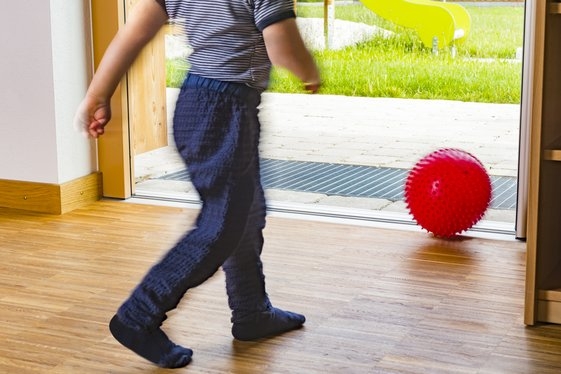Inclusion is a term that is difficult to define, even among experts.
But what is clear is that accessibility is only the means to the end of inclusion.
Wheelchair users, who have to use a ramp in the backyard instead of the main entrance. This is because the main entrance is not threshold-free.
Visually impaired people, who have to ask for a menu that is easy to read or in audio. Because the standard menu has a small font with poor contrasts.
Such special solutions address people with disabilities only. They are not offered to people without disabilities. Instead, people have to actively request them when needed. This creates accessibility, but not inclusion. On the contrary, such solutions are often discriminatory.
That’s why advocacy groups for people with disabilities also demand universal design instead of special solutions.
Once universal design is applied, accessible solutions become the standard available to all.
Think of Braille on medication packaging. That is a standard for ALL medications, for ALL patients.
So blind people don’t have to ask the pharmacist for Braille embossing.
Or train stations with exclusively threshold-free crossings, automatic doors and a tactile guidance system. Today, this is already a matter of course and required by law.
Inclusion through design for all has advantages for everyone: For some, it is a prerequisite for access to localities or information. For all, universal design offers greater convenience. And for the providers, the customer base increases.

Threshold-free doors from Alumat, for example, are barrier-free, inclusive and simply look better!
Subsequent solutions to meet the minimum legal requirements for accessibility are always more expensive, usually visually unattractive and rarely inclusive.
If you try to provide the easiest possible access for as many people as possible right from the start, during product development or building design, you will end up with a truly customer-friendly and therefore successful result. Universal design or design for All avoids special solutions, saves money and ensures true inclusion.
Find examples of smart solutions in Universal Design here.
Why accessible information in text AND speech can increase the reach of your message by up to 50 %.
read moreWhy the 2-senses principle is important and how to implement it
read moreWhy the Resort Stettiner Haff is a hotel concept of the future
read moreUsability is key for success. Therefore Universal design makes sense. Find 10 examples for best usability here
read moreFind out why Universal Design is not just about accessibility, but rather about good usability
read moreWhy the ZeroCon is the most important conference on accessibility:
read moreHow print media gain more reach with accessiblity
read moreZeroCon23 - THE event for the accessibility topic
read moreWhy Universal Design instead of special solutions is the right approach for inclusion
read moreShowcase of an accessible and inclusive hotel
read moreWhy the 2-senses principle is important and how to implement it
read moreFind out how Siri and Alexa promote sustainability in marketing
read more